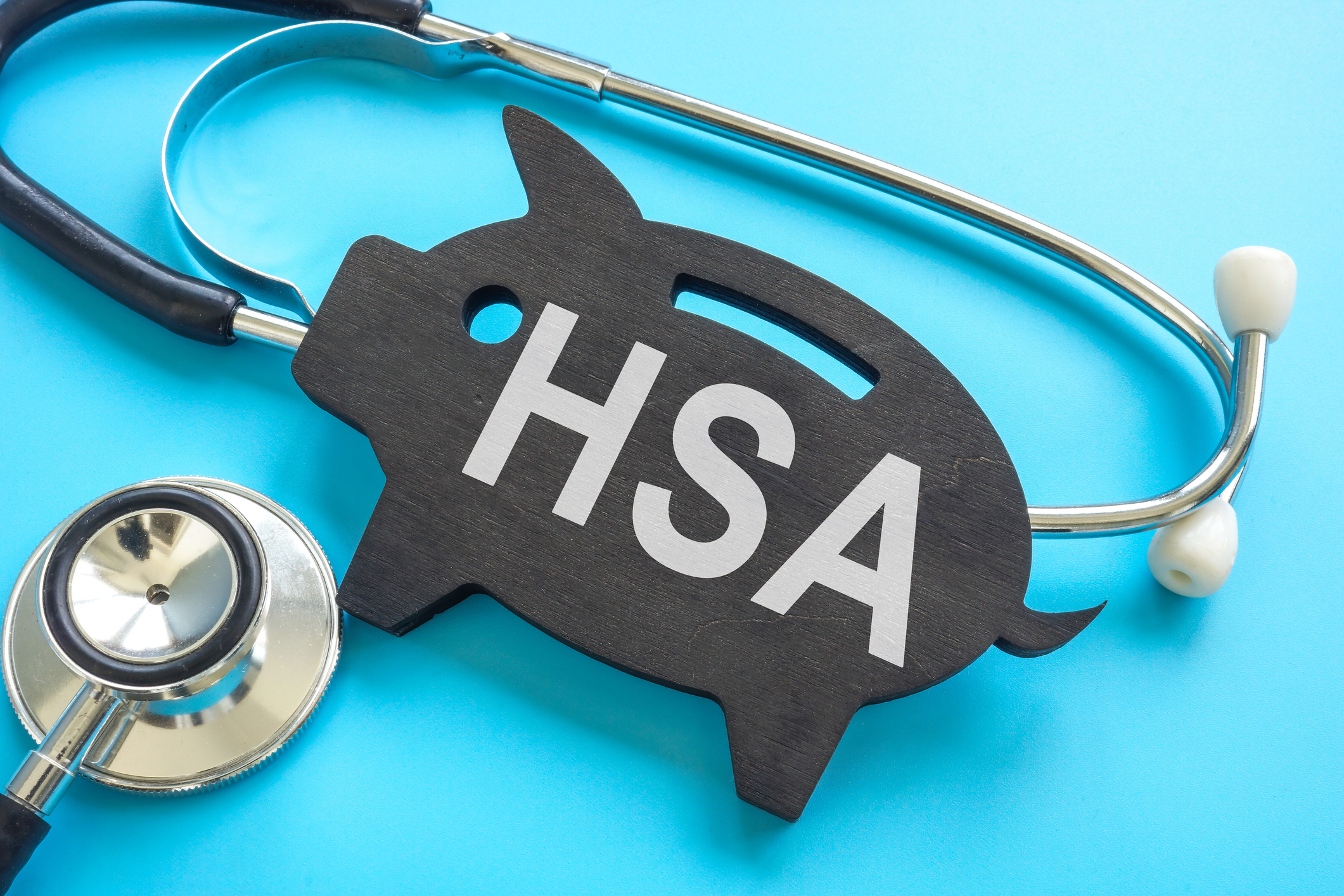9 Year-End Money Moves to Make Now
Boost your retirement savings, lower your taxes and get the most out of your health insurance.


The days are getting longer, and movie marathons of A Christmas Story have begun. That can mean only one thing: You have just a few weeks to boost your retirement savings, lower your taxes and get the most out of your health insurance before 2024 becomes a memory.
Boost your retirement savings
Top off retirement plans. If you claim the standard deduction — and these days, the majority of taxpayers do — you have a limited number of tax breaks available to you, so don’t overlook one of the most effective ways to lower your 2024 tax bill. Contributing to a traditional 401(k) or other employer-provided retirement plan will reduce your taxable income and enhance your retirement security. You have until the end of the year to contribute up to $23,000 to your 401(k) for 2024 if you’re younger than 50. You can put in an extra $7,500 if you’re 50 or older by the end of 2024, for a total of $30,500.
You have until the April 2025 deadline to file your tax return to contribute as much as $7,000, or $8,000 if you’re 50 or older, to a traditional IRA or Roth IRA for 2024. Contributions to a traditional IRA are deductible if you’re not covered by an employer-provided plan or your earnings fall below specific thresholds. Contributions to a Roth IRA aren’t deductible, but if you’re 59½ or older and have owned a Roth for at least five years, withdrawals are tax-free.

Sign up for Kiplinger’s Free E-Newsletters
Profit and prosper with the best of expert advice on investing, taxes, retirement, personal finance and more - straight to your e-mail.
Profit and prosper with the best of expert advice - straight to your e-mail.
If you work for yourself and have no employees (other than your spouse), you can save a significant amount of money in a solo 401(k). These plans allow you to make an employee contribution up to the standard 401(k) maximum as well as an employer contribution of up to 20% of your net self-employment income, for a combined total of no more than $69,000, or $76,500 if you’re 50 or older, for 2024.
You must establish the solo 401(k) and indicate that you plan to make an employee deferral by the end of 2024. But if you’re a sole proprietor, you have until the April 2025 tax-filing deadline to make both employee and employer contributions to your account.
Another option is a SEP IRA, which is generally less expensive and easier to set up than a solo 401(k). You can contribute as much as 20% of your net self-employment income to a SEP IRA, with a $69,000 limit for 2024. You have until the April 2025 tax-filing deadline to establish and fund your SEP for 2024. A SEP IRA is a good option if you have a side gig because you can contribute to both a SEP and your employer’s 401(k) plan.
Take RMDs. If you turned 73 in 2024, the deadline to take the first required minimum distribution from your traditional IRAs is April 1, 2025. Otherwise, you must take this year’s RMD by December 31, 2024. (Note that if you delay your first distribution until 2025, you will end up taking two RMDs in 2025, which could lift you into a higher tax bracket for that year.)
The law known as SECURE 2.0 Act, enacted in late 2022, lowered the penalty for missed withdrawals from 50% of the amount you should have withdrawn to 25% (or 10% if you correct the missed withdrawal in a timely manner). Still, that’s a significant chunk of your nest egg, so it’s important to get it right the first time. To calculate your RMD, divide your year-end account balance from the previous year by the IRS life expectancy factor based on your birthday in the current year. Your plan provider (or providers) should calculate RMDs for you, or you can use the IRS worksheets.
If you don’t need the money and are charitably inclined, you can reduce taxes on your RMDs by making a qualified charitable distribution before year-end. QCDs allow individuals who are 70½ or older to contribute directly from their IRA to a qualified charity, potentially satisfying all or part of their RMDs. In 2024, you can transfer up to $105,000 with a QCD. The contribution isn’t deductible, but the distribution will count toward your RMD and will be excluded from your taxable income.
For the donation to count as a QCD, the money must be transferred directly from your IRA to charity. Most IRA custodians will require you to fill out a form requesting the charitable payout. The custodian will then either send a check directly to the charity or make a check out to the charity and send it to you to mail to the organization. In either circumstance, get a receipt from the charity to substantiate the donation. Don’t wait until the last minute to do a QCD, because it can take time for the money to go from the IRA to the charity, and the charity must receive the money by December 31 for your contribution to count for 2024.
Lower your taxes
Round up deductible expenses. In 2024, the standard deduction is $14,600 for singles or $29,200 for married couples who file jointly. That means the majority of taxpayers will claim the standard deduction on their 2024 tax return. But if you’re within shouting range of itemizing, you can lower your tax bill by bunching deductible expenses before year-end. A common way to increase deductions is donating to charity, so if you contribute the same amount every year, consider doubling your donations this year and skipping next year.
If your municipality allows you to pay your tax bill early and you haven’t already paid $10,000 in state and local taxes — the maximum you can deduct in 2024 — pay your tax bill due in January in December so you can deduct it from your 2024 taxes.
Finally, if you had major surgery or a chronic medical condition in 2024, you may be eligible to deduct a portion of your out-of-pocket expenses. This deduction is limited to unreimbursed medical expenses that exceed 7.5% of your adjusted gross income, so it’s critical to keep track of all eligible expenses that insurance didn’t cover. Consider scheduling discretionary medical or dental procedures and appointments before year-end to increase your deductible expenses.
Take advantage of tax breaks for non-itemizers. Some money-saving tax breaks are available even if you don’t itemize, but you may need to act before year-end to take advantage of them:
If you’re an educator who has subsidized the cost of art supplies, whiteboards or other qualifying items for your classroom, you can deduct up to $300 of your out-of-pocket costs. You may also be eligible to claim the deduction for professional development courses if the cost wasn’t covered by your school or another source. If you’re married and your spouse is also an educator, you can deduct up to $600 of eligible classroom expenses as long as you file a joint return.
The American Opportunity tax credit is worth up to $2,500 in 2024 to offset the cost of tuition and other eligible expenses incurred by students who are in their first four years of undergraduate study. If you haven’t already maxed out on eligible expenses, prepaying tuition due in January will lower your tax bill. A credit is more valuable than a deduction because it represents a dollar-for-dollar reduction in your tax bill. Joint filers qualify for the full credit if their modified adjusted gross income is $160,000 or less. Single filers get the full amount with modified AGI of $80,000 or less. The credit is gradually reduced to zero for married couples with modified AGI between $160,000 and $180,000 and for single taxpayers with modified AGI between $80,000 and $90,000.
If you or someone in your household is in graduate school, you may be eligible for the Lifetime Learning tax credit. With this credit, you can claim 20% of the first $10,000 of out-of-pocket costs for college tuition, fees and books, for a total maximum credit of $2,000. Unlike the American Opportunity credit, the Lifetime Learning credit is not limited to undergraduate educational expenses.
Make gifts to reduce the size of your estate. In 2024, you can give away up to $18,000 (or $36,000 as a married couple) to as many people as you’d like without filing a gift tax return. This is a smart strategy for a couple of reasons. Although the current federal estate tax exclusion is $13.61 million ($27.22 million for married couples), it will drop to about $7.5 million ($15 million for married couples) after 2025 unless Congress extends provisions from the 2017 Tax Cuts and Jobs Act. In addition, 12 states and Washington, D.C., have lower estate tax exemptions than the federal government. Oregon, for example, taxes estates valued at more than $1 million.
For the gift to count toward the 2024 exemption, you must give the money away by December 31. You can give away even more money, tax-free, by making direct payments to cover a beneficiary’s medical bills or college tuition costs. There are no limits on the amount you can give as long as the payments are made directly to a medical or educational institution.
Check your withholding. There’s still time to take steps to avoid a big tax bill — and possibly an underpayment penalty — when you file your 2024 tax return. Use the IRS’s Tax Withholding Estimator to determine whether you should file a new Form W-4 with your employer and increase the amount of taxes withheld from your paycheck before the end of the year. You’ll need your most recent pay stub and a copy of your 2023 tax return to help estimate your 2024 income. If it looks as though you’re going to owe money when you file your next tax return, the IRS tool will tell you how much extra withholding you should put down on line 4(c) of Form W-4 to catch you up on withholding for the year. Early next year, complete another W-4 for withholding in 2025.
In general, you don’t have to worry about an underpayment penalty if you owe less than $1,000 after subtracting withholdings and credits, or if you paid at least 90% of the amount of taxes due for the current year or 100% of taxes due the previous year (whichever is smaller).
Don’t buy a tax liability. Thanks to the stock market’s strong performance, you may be tempted to buy additional mutual fund shares. But before you do, make sure you don’t accidentally increase your 2024 tax bill.
In December, many mutual funds pay out dividends and capital gains that have built up during the year. If you own shares on what’s known as the ex-dividend date in a taxable account, you’ll have to pay taxes on the payouts, even if you reinvest the money. If you’re planning to invest in a mutual fund, call the fund company or check its website to get the date and estimated amount of year-end distributions so you can time your purchase accordingly. The estimates are often reported as a percentage of a fund’s current share price.
Harvest your losses. Because it has been a good year for the stock market, you could be sitting on a lot of winners in your taxable accounts. If you have some losers in your portfolio, consider selling them so you can use the losses to offset some of your gains. These losses can also be used to lower taxes on mutual fund capital gains distributions. You can implement this strategy at any time, but many investors harvest losses near year-end because they can more accurately estimate their capital gains for the year. Unused losses can be carried forward to future years.
Get the most out of your health care
Use up funds in your flexible spending account. A flexible spending account (FSA) allows you to use tax-free money to cover health insurance deductibles, co-payments and other out-of-pocket costs. But you generally have to use the money by December 31 — or March 15 of the following year, if your employer provides a grace period — to avoid forfeiting the unused balance.
Among the items you can pay for with money in a health care FSA are medical devices such as hearing aids, blood pressure monitors and canes; over-the-counter drugs, including pain relievers, cough suppressants and allergy medicine; and prescription eyeglasses and contact lenses. See a list of eligible items at the FSA Store.
Note: This item first appeared in Kiplinger Personal Finance Magazine, a monthly, trustworthy source of advice and guidance. Subscribe to help you make more money and keep more of the money you make here.
Related Content
Get Kiplinger Today newsletter — free
Profit and prosper with the best of Kiplinger's advice on investing, taxes, retirement, personal finance and much more. Delivered daily. Enter your email in the box and click Sign Me Up.

Block joined Kiplinger in June 2012 from USA Today, where she was a reporter and personal finance columnist for more than 15 years. Prior to that, she worked for the Akron Beacon-Journal and Dow Jones Newswires. In 1993, she was a Knight-Bagehot fellow in economics and business journalism at the Columbia University Graduate School of Journalism. She has a BA in communications from Bethany College in Bethany, W.Va.
-
 Ten Cheapest Places To Live in Florida
Ten Cheapest Places To Live in FloridaProperty Tax Make your Florida vacation spot daily living — these counties have the lowest property tax bills in the state.
By Kate Schubel
-
 I'm 50 and my home is worth $5 million. Can I retire now?
I'm 50 and my home is worth $5 million. Can I retire now?It may be oh-so tempting to cash out your upscale home and leave work for good. But should you? We ask the experts.
By Maurie Backman
-
 I'm 50 and My Home Is Worth $5 Million. Can I Retire Now?
I'm 50 and My Home Is Worth $5 Million. Can I Retire Now?It may be oh-so tempting to cash out your upscale home and leave work for good. But should you? We ask the experts.
By Maurie Backman
-
 Bouncing Back: New Tunes for Millennials Trying to Make It
Bouncing Back: New Tunes for Millennials Trying to Make ItAdele's mournful melodies kick off this generation's financial playlist, but with the right plan, Millennials can finish strong.
By Alvina Lo
-
 Americans Are Retiring Later: Will This Trend Last?
Americans Are Retiring Later: Will This Trend Last?Given a host of pressures to keep working, Americans are retiring later in life. Will regulatory and economic forces encourage you to work longer?
By Christy Bieber
-
 What Are AI Agents and What Can They Do for You?
What Are AI Agents and What Can They Do for You?AI agents promise to be the next big thing in artificial intelligence, but what exactly do they do?
By Tom Taulli
-
 Should You Buy an iPhone Now Before Tariffs Hit?
Should You Buy an iPhone Now Before Tariffs Hit?Looming tariffs can make an iPhone purchase seem urgent. Here's what to do if you need another phone but want to save money.
By Laura Gariepy
-
 Retiring Without a Partner? How Singles Can Maximize Their Savings
Retiring Without a Partner? How Singles Can Maximize Their SavingsRetirement can be expensive, especially when you do it alone, surveys show. But there are ways to maximize your retirement savings even when facing your second act without a partner.
By Kathryn Pomroy
-
 Here's When a Lack of Credit Card Debt Can Cause You Problems
Here's When a Lack of Credit Card Debt Can Cause You ProblemsUsually, getting a new credit card can be difficult if you have too much card debt, but this bank customer ran into an issue because he had no debt at all.
By H. Dennis Beaver, Esq.
-
 Reminder: The Basics of Using HSA Funds
Reminder: The Basics of Using HSA FundsHealth savings accounts (HSAs)can help you cover out-of-pocket medical costs. Just make sure you understand the rules and keep records of qualifying expenses.
By Ella Vincent